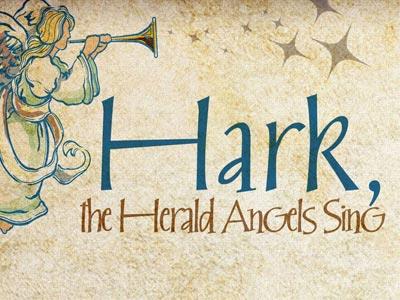-
Peaceable Kingdom
Contributed by Michael Elmore on Nov 28, 2017 (message contributor)
Summary: Advent. Isaiah’s vision of Christ’s Millenial Kingdom
THE PEACEABLE KINGDOM
Isaiah 11:1-10
Introduction:
"The Peaceable Kingdom" is the title early 19th-century painter, Edward Hicks, gave to this benign menagerie of animals - wild and domesticated. He based his work on this Isaiah 11 passage that speaks of such animals as the wolf, lamb, leopard, lion, kid and calf - all sharing the same pasture, grazing and resting together. Hicks’ vision, like that of Isaiah, is of a world of peace, and of love and tranquility. Since September 11th , however, peace once again seems elusive. Why were we so optimistic? To what or to Whom can we look for a lasting and enduring peace?
As we read this passage from Isaiah this morning it is important to understand that Isaiah describes not only the birth of Christ, but also His millennial reign ( one thousand year ) of Christ. Only then will the wolf live with the lamb, the leopard lie down with the goat, the calf and the lion and the yearling dwell together. How many of you believe that Christ is coming back for His Church? Its amazing to realize that a prophecy that was written 3500 years ago still waits to be fulfilled in our future.
Proposition:
Although Isaiah’s prophecy may seem antiquated to some, its message is relevant to us today. Isaiah declares to us the coming of the Prince of Peace who is the source of everlasting peace which is needed by every human heart so desperately.
Interrogative:
In a world so torn by war and terrorism this Advent Season, how can we find the kind of peace that Isaiah predicts can be ours?
Transition:
1. By Knowing the Prince of Peace
2. By Understanding the Source of Peace
3. By Experiencing the Restoration of Peace
I. By Knowing the Prince of Peace
“A shoot will come up from the stump of Jesse; from his roots a Branch will bear fruit”. v.1
A. Israel Needed to Know the Prince of Peace
1. The prophet Isaiah lived about 721 B.C. which is a significant date because it marks the time of the fall of the 10 Northern tribes of Israel to the Assyrian Empire, the world’s only superpower of the time.
2. We find in the first ten chapters of Isaiah that Israel is facing the judgment of God because of her unfaithfulness in serving the gods of the nations around her. Isaiah prophesies that Israel will be invaded by the Assyrians and carried into exile.
3. In chapter 11:1 Isaiah calls the lineage of the Davidic dynasty the “stump of Jesse”. This is the only time in the Old Testament that David’s line is called by His father’s name. Isaiah predicts that the Davidic dynasty will be completely cut off, so that all that remains is the stump of its family tree.
4. However, in chapter 11 the prophet also predicts
the future restoration of the Kingdom through the
re-establishment of a Davidic Messiah. Isaiah states that out of the stump of Jesse’s family tree a “shoot” or a fresh stem will sprout and that the sprout will grow into full bloom until it becomes the Branch of the Lord.
5. When I was a boy we had a Dutch Elm tree that
grew between our driveway and our neighbor’s. No
matter how many times we cut that tree down to a
stump, fresh shoots would grow until it once again
towered over our property line. That is the same
picture that Isaiah uses here that regardless of the
destruction of David’s family tree, Messiah will
come as a small shoot that will grow into a mighty
Branch the planting of the Lord.
6. You will note in your Bibles that the word “Branch”
is capitalized because it is referring to none other than the Lord Jesus Christ “the Prince of Peace.” Isa. 9:6
7. The message that Isaiah portrays to the people of Israel is a message of hope. That what God has cut off is also that which God restores. That the One who judges His people for their sins, is also the One who forgives them and restores Peace. Isaiah’s message to Israel is their need to know this coming Prince of Peace.
B. We Need to Know the Prince of Peace.
1. Missionary Don Richardson who served for many years among the primitive tribes in Papua New Guinea wrote a book entitled “The Peace Child.” He writes how in translating the Scriptures into the native tribesmen language, he could find no words to express how Jesus Christ came to give His life that we might have peace with God. In his book he relates how he finally found the answer in the culture of the native people themselves.
He tells the story of two tribes in Papua New Guinea who maintained a blood feud between themselves for several generations. Each generation fought and nursed their wounds only to fight again killing and maiming more and more people. Finally after years of struggle the two tribes realized that they must stop fighting or nothing would be left of their peoples. But what could they do to end years of warring between the two tribes? Don Richardson goes on to tell that the chiefs of the two tribes came together and brought with them a child they called “the Peace Child”. This child was the son of one of the opposing chiefs which was then adopted into the family of the opposing chief. As long as that child lived the two chiefs promised to cease their fighting so that all could lived. Don Richardson had finally found a perfect picture of God’s love for us in sending the His Son, the Prince of Peace to die for us.

 Sermon Central
Sermon Central



